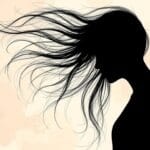
Top 5 Future Health Software Technologies That Will Transform Care
Introduction
Healthcare has come a long way from the days of paper records and manual processes.
The evolution of future health software has played a pivotal role in streamlining operations, improving patient care, and enhancing data management.
As technology continues to advance, we stand on the cusp of a digital healthcare revolution, with innovative software solutions poised to transform the way we approach and deliver care.
In this blog post, we’ll explore the top five future health software technologies to revolutionize the healthcare industry.
The Role of Software in Healthcare In the past, healthcare relied heavily on traditional methods such as paper-based record-keeping and manual data entry.
However, the advent of future healthcare software solutions has transformed the industry, enabling efficient management of patient data, streamlining clinical workflows, and enhancing overall operational efficiency.
Software plays a critical role in enhancing patient care by providing healthcare professionals with easy access to comprehensive medical records, enabling accurate diagnosis and treatment planning.
Additionally, future health software solutions facilitate seamless communication and coordination among various healthcare providers, ensuring continuity of care for patients.
What Software is Used in Healthcare Today?
The healthcare industry currently utilizes a range of software applications, including Electronic Health Records (EHRs), telehealth platforms, and diagnostic tools.
EHRs have become an essential component, enabling healthcare providers to maintain comprehensive patient records, track medical histories, and coordinate care across multiple facilities.
Telehealth platforms have gained significant traction, particularly in the wake of the COVID-19 pandemic, by enabling remote consultations and follow-up appointments and improving access to care for patients in remote or underserved areas.
While these solutions have revolutionized healthcare delivery, they still have limitations. For instance, EHRs often lack interoperability, making it challenging to share data across different systems.
Additionally, future health software solutions may struggle to keep up with the ever-increasing volume of healthcare data and the complex analytics required for personalized care.
The Future of AI in Healthcare Artificial Intelligence
(AI) is poised to play a transformative role in the future of healthcare.
AI algorithms can analyze vast amounts of patient data, enabling more accurate diagnoses, personalized treatment plans, and improved patient monitoring.
AI-powered diagnostic tools can analyze medical images and patient data to detect potential health issues early, enabling timely interventions and better outcomes.
Furthermore, AI can assist in clinical decision-making by providing data-driven recommendations, reducing the risk of human error, and improving patient safety.
Real-world examples of AI applications in healthcare include the use of AI-powered chatbots for virtual triage and symptom checking, as well as the development of AI-driven drug discovery platforms that can accelerate the process of identifying potential new treatments.
Top 5 Future Health Software Innovations
1. Predictive Analytics for Preventive Care Predictive Analytics leverages machine learning algorithms and vast data sets to identify patterns and predict future health outcomes.
By analyzing patient data, such as medical histories, lifestyle factors, and genetic information, predictive models can identify individuals at risk for developing certain conditions, enabling healthcare providers to implement preventive measures and early interventions.
2. Blockchain for Secure Health Data Exchange: Ensuring the privacy and security of patient data is a crucial challenge in healthcare.
Blockchain technology offers a decentralized and secure solution for storing and sharing sensitive medical information.
By creating an immutable and transparent ledger, blockchain can enable secure data exchange among healthcare providers, patients, and other stakeholders, while maintaining strict access controls and audit trails.
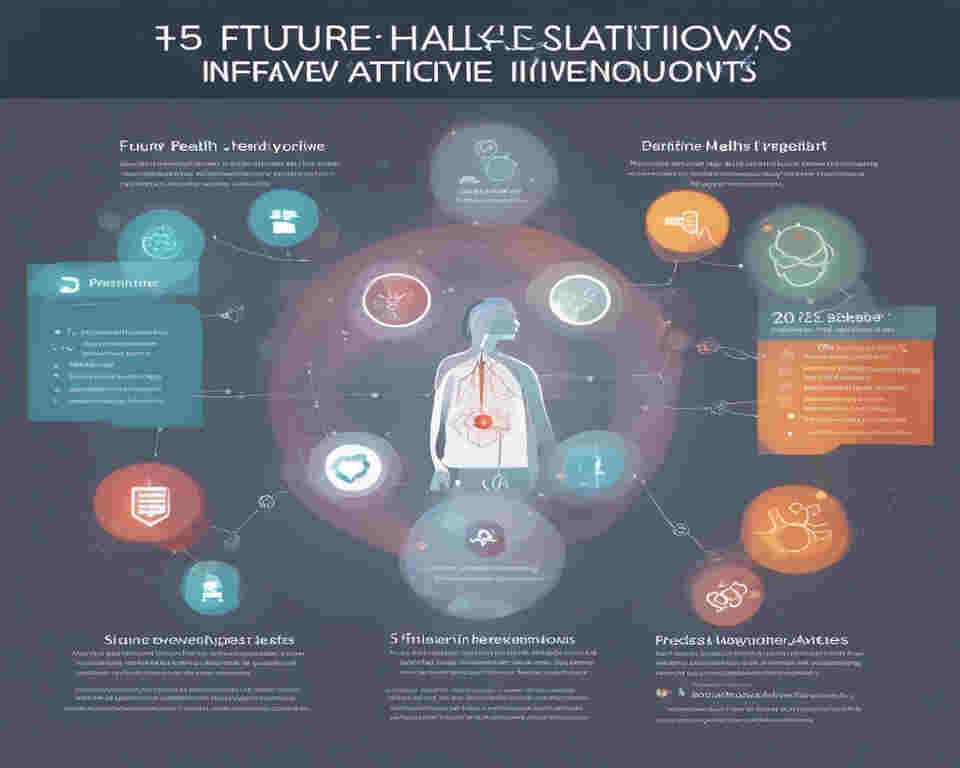
3. Virtual Reality (VR) for Patient Education and Rehabilitation Virtual Reality (VR) technology has the potential to revolutionize patient education and rehabilitation processes.
VR simulations can provide immersive experiences that help patients better understand their conditions, treatments, and recovery processes.
Additionally, VR-based rehabilitation programs can create engaging and motivating environments for patients undergoing physical or cognitive therapy, potentially improving outcomes and reducing recovery times.
4. Wearable Technology for Continuous Monitoring Wearable devices, such as smartwatches and fitness trackers, has gained widespread popularity for monitoring physical activity and basic health metrics.
However, the future of wearable technology holds even greater potential in healthcare.
Advanced wearables can continuously monitor vital signs, sleep patterns, and other health indicators, providing real-time data to healthcare providers and enabling early detection of potential health issues.
5. Robot-assisted surgery and Care Robotics are increasingly being integrated into healthcare, with applications ranging from precise surgical procedures to patient care and rehabilitation.
Robot-assisted surgeries offer enhanced precision, dexterity, and control, resulting in shorter recovery times and reduced complications.
Furthermore, robots can assist in patient care tasks, such as medication management, patient transfer, and rehabilitation exercises, reducing the physical strain on healthcare professionals and improving overall care quality.
What is the Future of Health Care?
The future health software is one characterized by unprecedented advancements in technology and software solutions.
Trends such as personalized medicine, telemedicine, and the Internet of Medical Things (IoMT) are expected to shape the healthcare landscape.
Additionally, the integration of emerging technologies like 5G, edge computing, and quantum computing will enable faster data processing, improved connectivity, and more sophisticated healthcare applications.
However, successful adoption of these future technologies will require addressing challenges such as data interoperability, regulatory compliance, and the ethical use of patient data.
Collaboration between healthcare providers, technology companies, and policymakers will be crucial in navigating these challenges and ensuring responsible implementation of future health software solutions.
How Future Health Software Will Transform Care
Future health software holds the promise of transforming healthcare by improving accessibility, efficiency, and personalization.
Imagine a scenario where predictive analytics identify your risk for a specific condition, enabling your healthcare provider to implement preventive measures tailored to your unique genetic and lifestyle factors.
Virtual reality simulations can guide you through your treatment journey, while wearable devices continuously monitor your health, alerting your care team to any concerning changes.
In the event of a required surgical procedure, robot-assisted technology can ensure precise and minimally invasive operations, leading to faster recovery times.
Throughout this process, your medical data would be securely stored and shared among your healthcare providers using blockchain technology, ensuring privacy and seamless coordination of care.
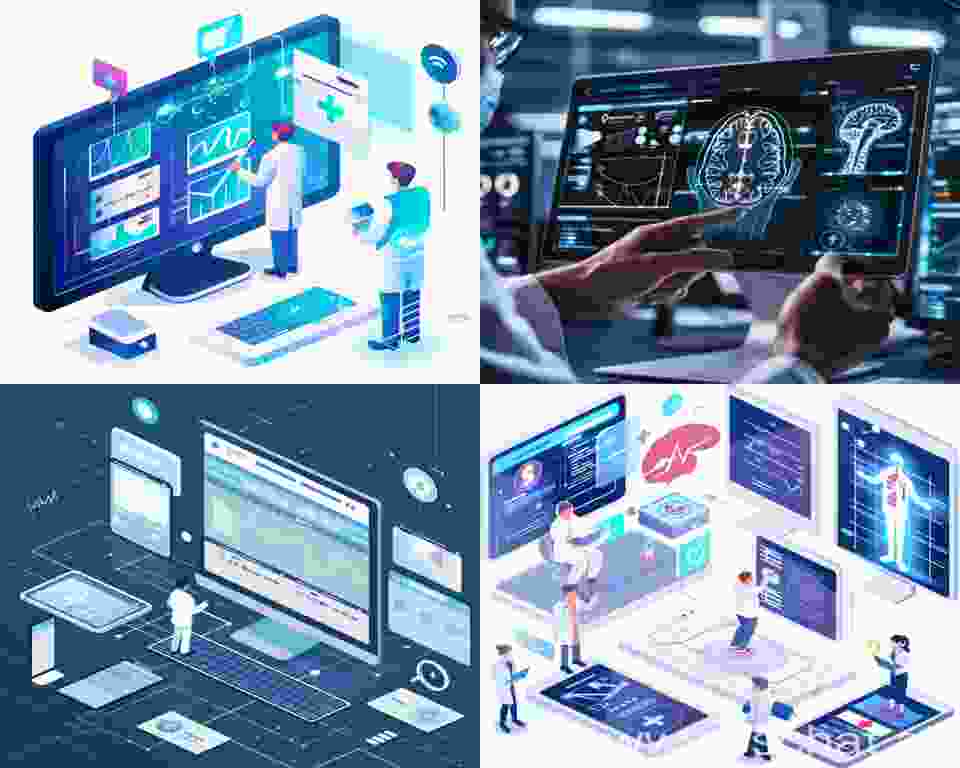
8 Key Healthcare Technology Trends in Future Health:
Generative AI Chatbots and Virtual Healthcare Assistants:
Imagine a patient walking into a clinic, and within moments, the doctor retrieves their medical history from around the globe. These AI-powered chatbots and virtual assistants enhance patient interactions, provide personalized information, and streamline administrative tasks.
Nanomedicine:
Nanotechnology is making waves in healthcare. It involves designing and using tiny particles (nanoparticles) to diagnose, treat, and prevent diseases.
Nanomedicine promises targeted drug delivery, early disease detection, and improved imaging techniques.
Virtual Reality (VR) and Augmented Reality (AR) in healthcare:
VR and AR technologies are transforming medical training, patient education, and even pain management. Surgeons can practice complex procedures in a virtual environment, and patients can experience immersive therapy sessions.
Personalized Medicine and Genomics:
Advances in genomics allow us to tailor treatments based on an individual’s genetic makeup. Precision medicine aims to optimize therapies, minimize side effects, and improve patient outcomes.
Organ Care Technology & Bioprinting:
Organ transplantation faces challenges like donor shortages and organ rejection.
Organ care technology (such as portable organ preservation systems) and bioprinting (creating 3D-printed organs) offer innovative solutions.
Virtual Hospitals:
Picture a hospital without physical walls. Virtual hospitals leverage telemedicine, remote monitoring, and digital health platforms to provide care outside traditional hospital settings. Patients receive expert guidance from the comfort of their homes.
Digital Twin Technology:
Inspired by aerospace and engineering, digital twins create virtual replicas of patients, organs, or entire healthcare systems. These models help predict outcomes, optimize treatments, and enhance decision-making.
Edge Computing in Healthcare:
Edge computing brings computation closer to data sources (e.g., medical devices, wearables). It enables real-time analytics, faster response times, and secure data processing at the point of care.
About Nanomedicine:
Nanomedicine is an exciting field that combines nanotechnology with healthcare. Let’s dive into the details:
Definition and Scope:
Nanomedicine refers to the medical application of nanotechnology.
It encompasses a wide range of approaches, from using nanomaterials and biological devices to exploring potential applications of molecular nanotechnology (such as biological machines) in the future.
At its core, nanomedicine leverages the unique properties exhibited by materials at the nanometric scale (approximately 10^-9 meters).
These properties often differ significantly in terms of physics, chemistry, or biology compared to the same material at a larger scale.
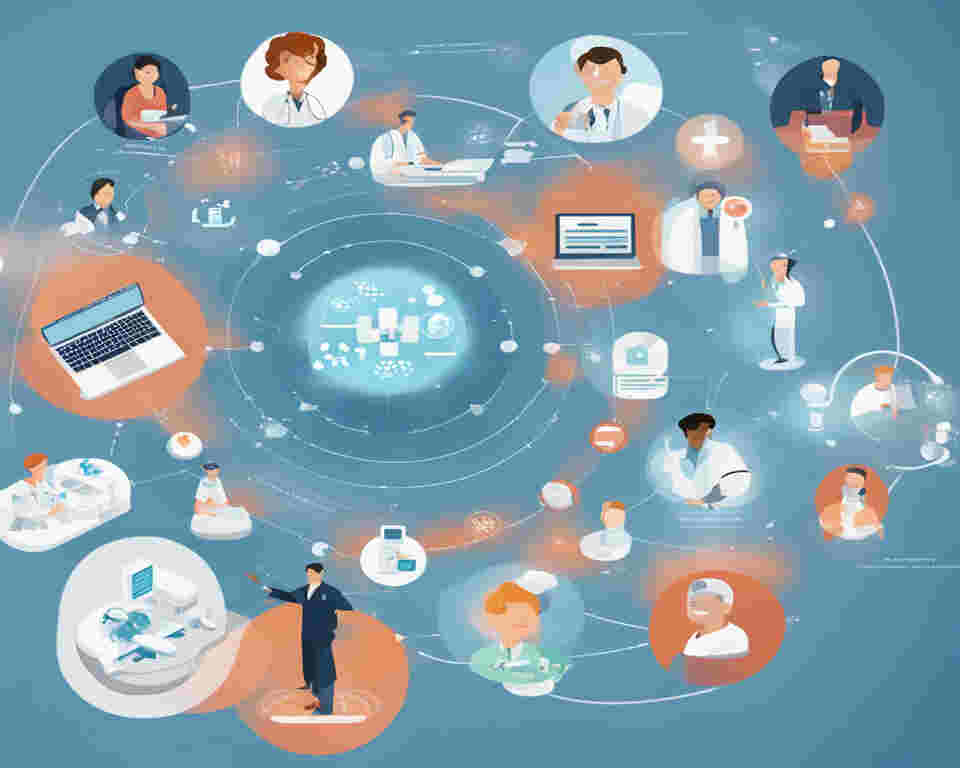
Applications and Functionalities:
Drug Delivery:
Nanotechnology enables precise drug delivery. By using nanoparticles, drugs can be targeted to specific cells or regions within the body.
This approach minimizes side effects, reduces overall drug consumption, and lowers treatment expenses.
Diagnostic Devices:
Integrating nanomaterials with biology has led to the development of diagnostic tools.
These include biosensors, contrast agents, and analytical devices for both in vivo (inside the body) and in vitro (outside the body) biomedical research.
Therapeutic Applications:
Nanomedicine holds promise for physical therapy applications. For instance, nanoparticles can be used for localized heating (hyperthermia) to treat tumors1.
Genomics and Personalized Medicine:
Nanotechnology plays a role in understanding an individual’s genetic makeup. Precision medicine aims to tailor treatments based on genetic information, optimizing therapies and improving patient outcomes.
Imaging Techniques:
Nanoparticles enhance imaging modalities, allowing for better visualization of tissues and disease markers.
Challenges and Considerations:
Toxicity and Environmental Impact:
Understanding the toxicity and environmental effects of nanoscale materials is crucial. Researchers must address safety concerns related to exposure and disposal.
Integration with Biology:
Nanomaterials need to be effectively interfaced with biological molecules or structures. This integration drives innovation in nanomedicine.
Future Prospects:
The National Nanotechnology Initiative anticipates new commercial applications in the pharmaceutical industry.
These may include advanced drug delivery systems, novel therapies, and improved in vivo imaging.
Nanomedicine research receives funding from programs like the U.S. National Institutes of Health Common Fund, supporting nanomedicine development centers.

Some Examples of Nanomaterials Used in Medicine:
Nanomaterials play a pivotal role in modern medicine, offering innovative solutions across various applications. Let’s explore some examples:
Nanoparticles for Drug Delivery:
Nanoparticles can precisely deliver drugs to specific cells or regions within the body. They enhance drug targeting, bioavailability, and biocompatibility.
Magnetic Nanoparticles:
Used to replace radioactive technetium to track cancer spread along lymph nodes. They work via magnetic resonance imaging (MRI) contrast changes.
Fluorescent Nanoparticles:
Enhance imaging techniques and can recognize specific cell types or disease states.
Nanocapsules and Liposomes:
Carriers for drug delivery, allowing slow and targeted release1.
Hyperthermia and Tumor Destruction:
Nanoparticles can be heated locally using alternating magnetic fields, effectively destroying tumors via hyperthermia.
Superparamagnetic Iron Oxide Nanoparticles: Used for localized heating and tissue destruction.
Fluorescent Imaging and PET/CT Enhancement:
Nanoparticles can enhance fluorescent imaging and improve images from positron emission tomography (PET) or ultrasound.
Targeted nanoparticles recognize specific cells or disease conditions.
Brain Drug Delivery:
Inhalable nanoparticles hold promise for treating neurological disorders like Parkinson’s disease, Alzheimer’s, and multiple sclerosis. They aid in drug delivery to the brain.
Tissue Repair and Scaffolded Structures:
Nanoparticles and nanofibers are crucial in designing scaffold structures for tissue and bone repair.
Calcium Hydroxyapatite Nanoparticles:
Combined with collagen or substitutes, they could revolutionize tissue-repair therapies.
Sunscreen Innovation:
Sunscreen Optisol, developed at the University of Oxford, uses nanoparticles. It’s transparent in visible light but retains ultraviolet-blocking action on the skin.
Traditional sunscreen ingredients (zinc oxide and titanium dioxide) generate free radicals, potentially damaging skin cells and DNA. Nanoparticles offer a safer alternative.
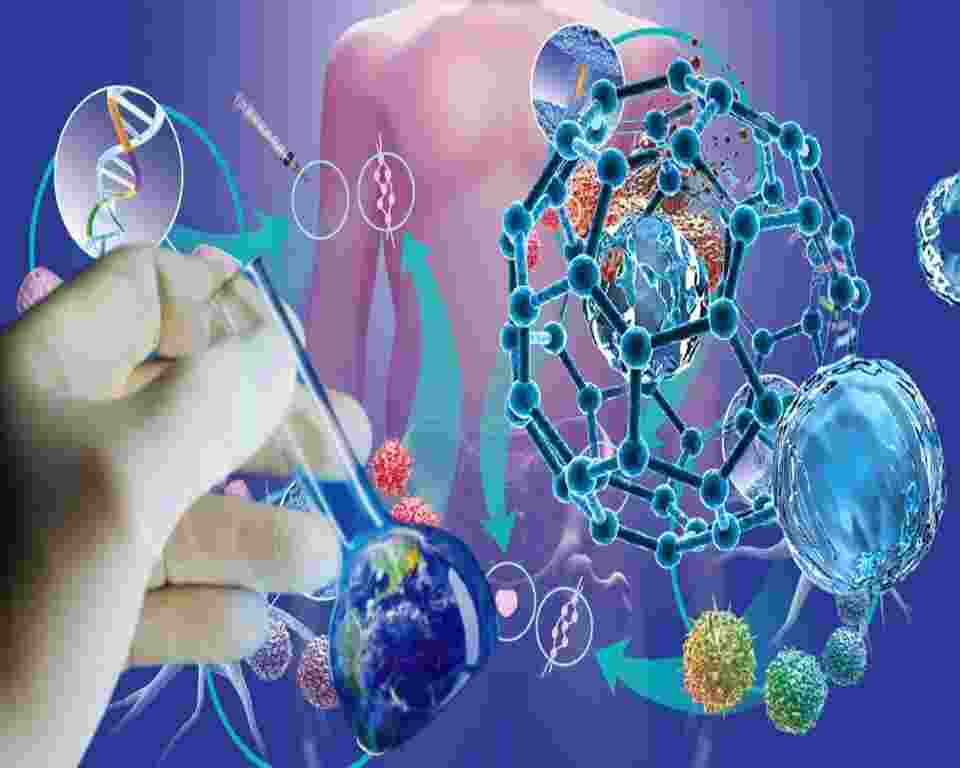
Conclusion:
The future health software is inextricably linked to the advancement of health software technologies.
The top five innovations explored in this blog post – predictive analytics, blockchain, virtual reality, wearable technology, and robot-assisted care – represent just a glimpse into the transformative potential of software in healthcare.
As we embrace these technological advancements, we move closer to a future where healthcare is more accessible, personalized, and efficient.
However, realizing this vision requires a collective effort from healthcare providers, patients, and technology companies to support and adopt these innovative solutions.
By embracing the power of future health software, we can revolutionize the way we approach care, ultimately leading to better health outcomes and improved quality of life for individuals worldwide.
FAQs
Q1: What future health software is currently used in healthcare?
Today, healthcare heavily relies on Electronic Health Records (EHRs), telehealth platforms, diagnostic tools, and patient management systems.
These tools help streamline operations, improve patient care, and facilitate communication among healthcare professionals.
Q2: How will AI change the future health software?
AI is set to revolutionize healthcare by improving diagnostic accuracy, personalizing treatment plans, and enhancing patient monitoring. Its predictive capabilities will also play a significant role in preventive care, potentially reducing the overall incidence of chronic diseases.
Q3: What is the potential of blockchain in healthcare?
Blockchain technology offers a secure, transparent way to manage health records, ensuring patient data privacy while facilitating seamless information exchange among authorized professionals. It promises to enhance data integrity and reduce fraud in healthcare systems.
Q4: How can virtual reality (VR) benefit patients?
VR can be used for patient education, allowing individuals to understand their health conditions better through immersive experiences. It’s also an effective tool for rehabilitation, offering safe, controlled environments for patients to practice physical or cognitive exercises.
Q5: What role do wearables play in health monitoring?
Wearable technology plays a critical role in continuous health monitoring, offering real-time data on vital signs, physical activity, and even sleep patterns. This enables early detection of potential health issues and promotes proactive health management.
Q6: What advantages do robot-assisted surgeries offer?
Robot-assisted surgeries provide greater precision, flexibility, and control than traditional techniques, often resulting in smaller incisions, reduced pain, and quicker recovery times. They also allow for minimally invasive procedures, improving surgical outcomes.



